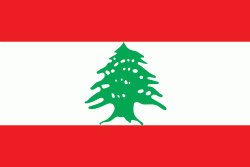Bint Jbeil (Bent Jbaïl)
Bint Jbeil (بنت جبيل) is the second largest town in the Nabatiye Governorate in Southern Lebanon.
The town has an estimated population of 30,000. Its exact population is unknown, because Lebanon has not conducted a population census since 1932.
According to E. H. Palmer, the name means "The daughter of the mother of the little mountain".
The town has an estimated population of 30,000. Its exact population is unknown, because Lebanon has not conducted a population census since 1932.
According to E. H. Palmer, the name means "The daughter of the mother of the little mountain".
Map - Bint Jbeil (Bent Jbaïl)
Map
Country - Lebanon
 |
 |
| Flag of Lebanon | |
The earliest evidence of civilization in Lebanon dates back to 5,000 BCE. From c. 3200–539 BC, it was home to the flourishing Phoenician civilization before being annexed by various Near Eastern empires. In 64 BC, the Roman Empire conquered the region, and the region became a major center for Christianity under the Byzantine Empire. In the 7th century, the Muslim conquest of the Levant established caliphal rule. The 11th century saw the start of the Crusades and the establishment of Crusader States in the region only for it to be later reclaimed by the Ayyubids and Mamluks before being ceded to the Ottoman Empire in the 16th century. Under Sultan Abdulmejid I, the first Lebanese protostate took form in the 19th century as the Mount Lebanon Mutasarrifate, created as a home for the Maronite Christians under the Tanzimat reforms.
Currency / Language
| ISO | Currency | Symbol | Significant figures |
|---|---|---|---|
| LBP | Lebanese pound | لل | 2 |
| ISO | Language |
|---|---|
| AR | Arabic language |
| HY | Armenian language |
| EN | English language |
| FR | French language |















